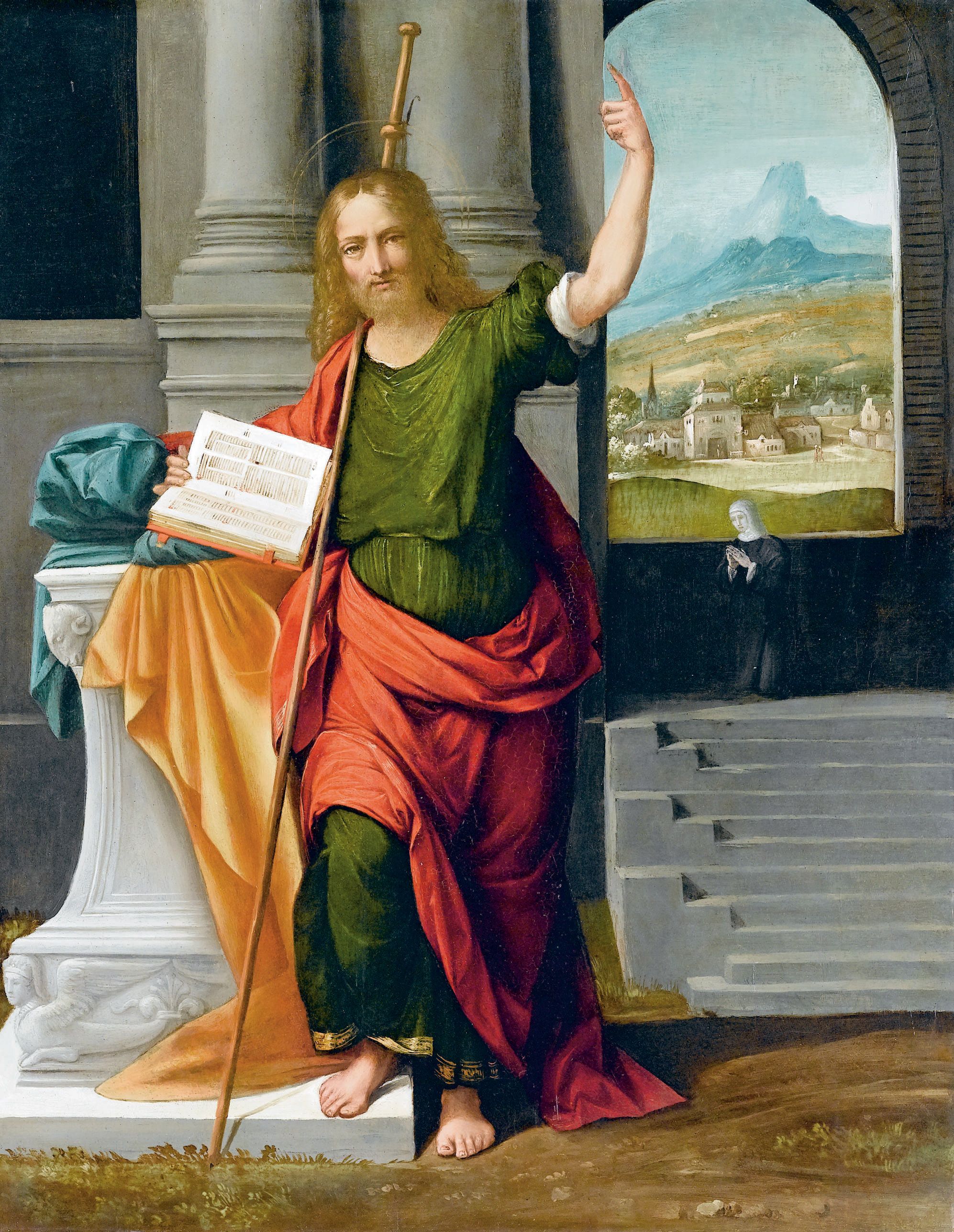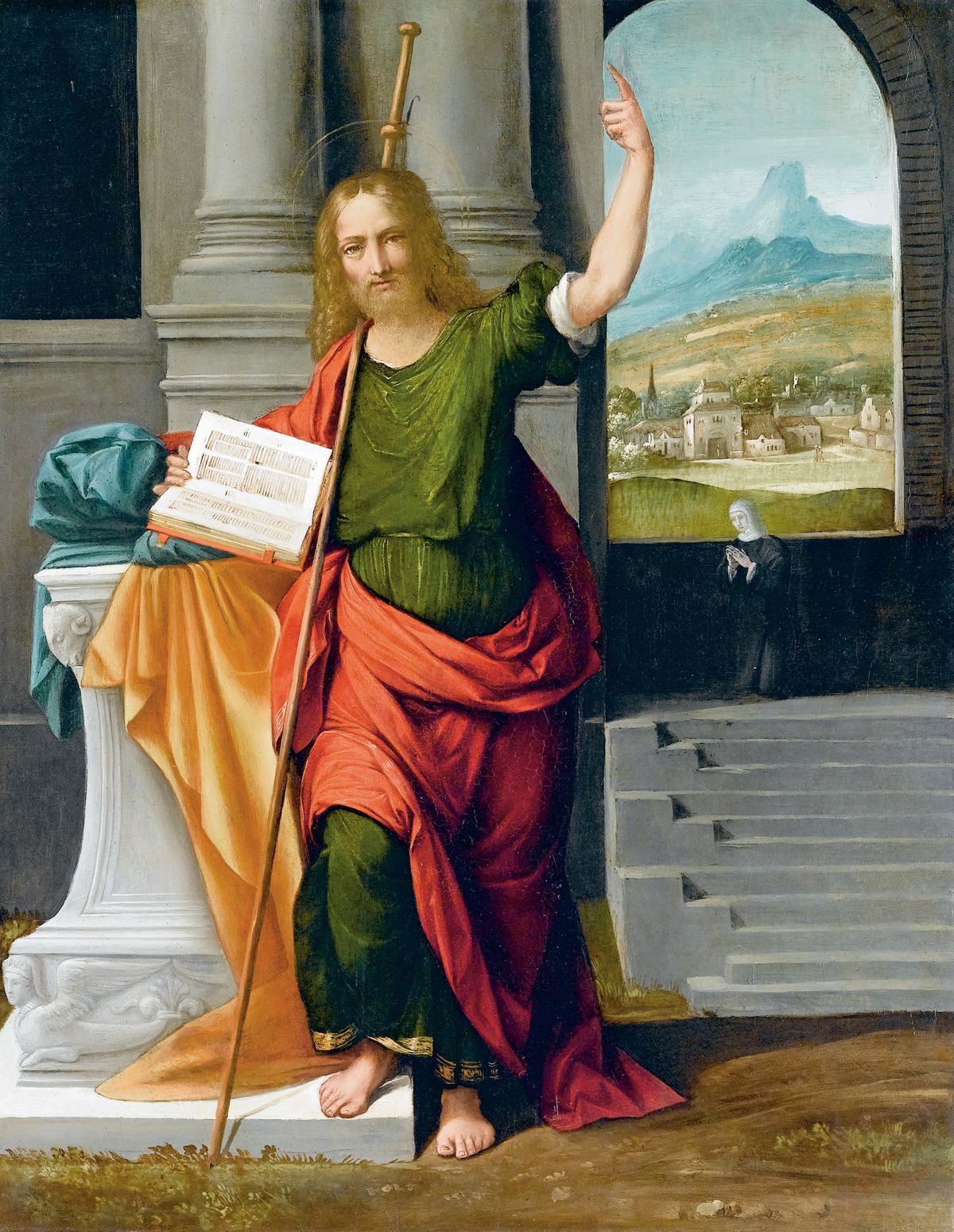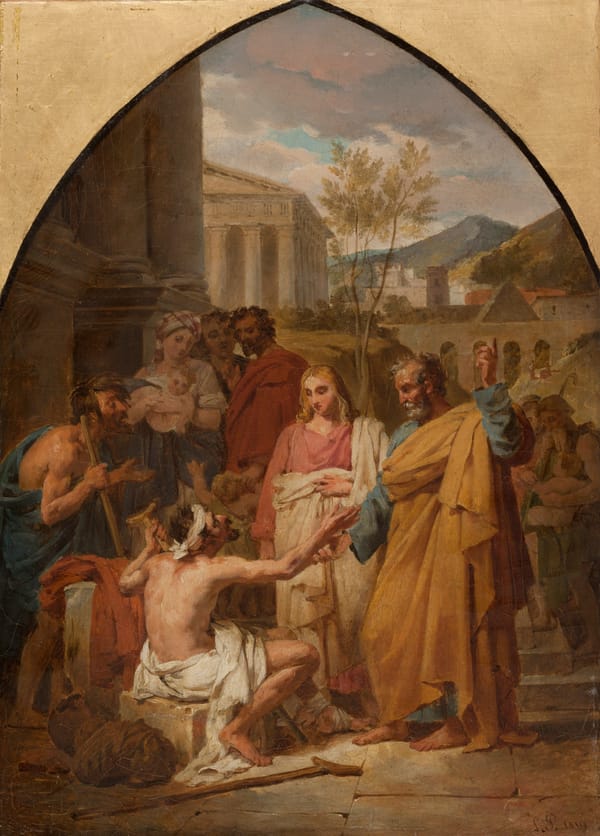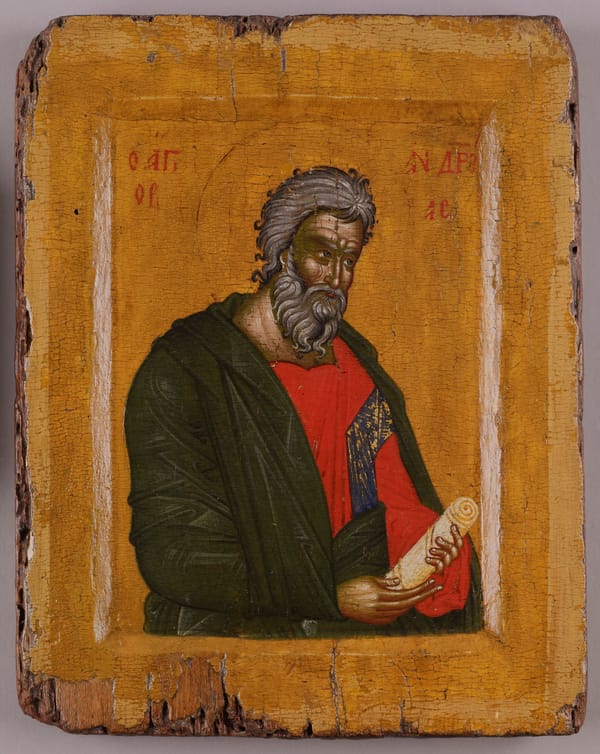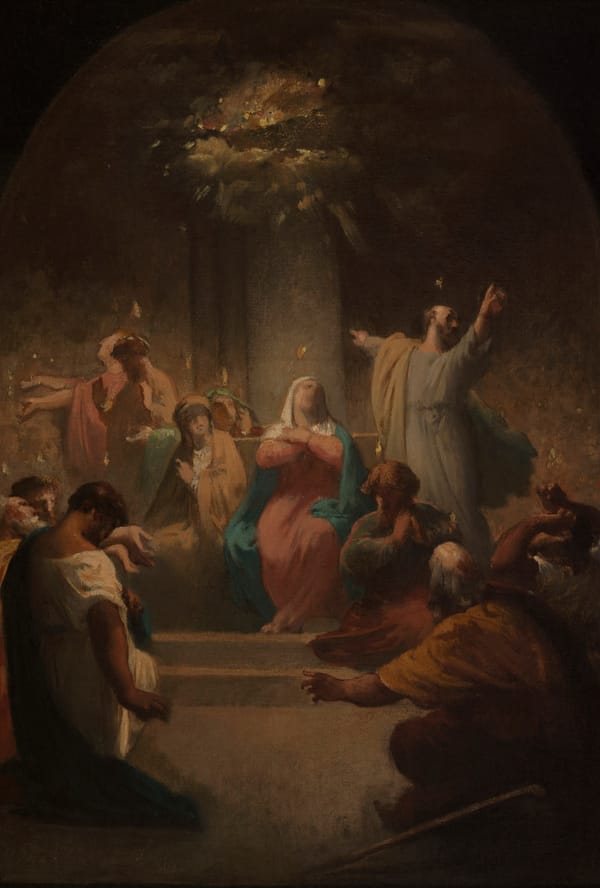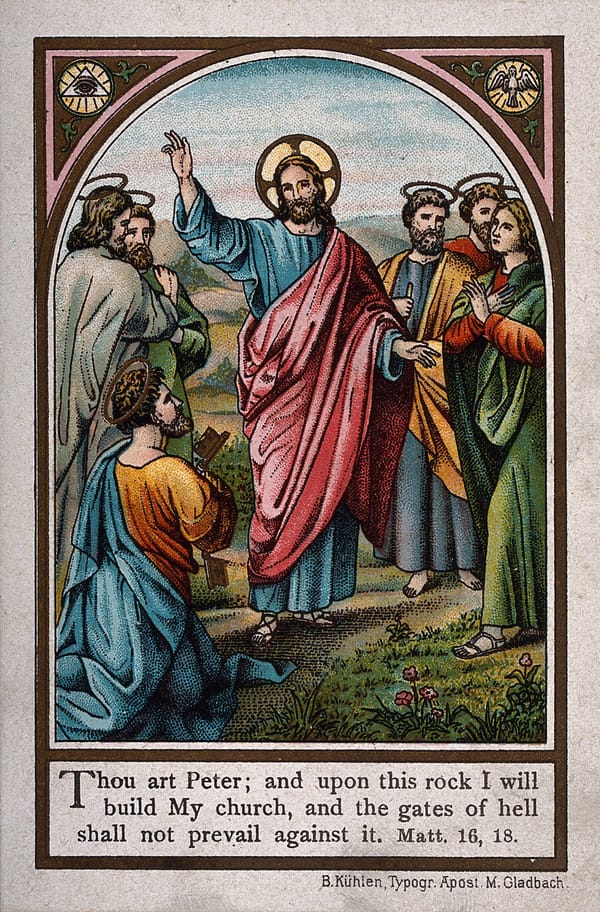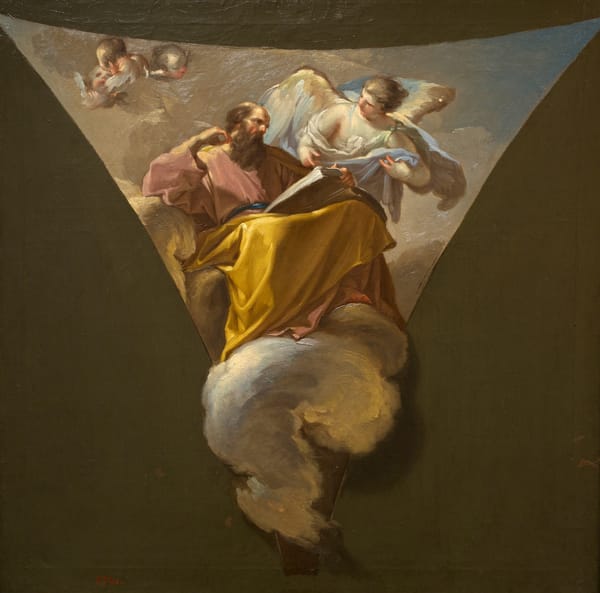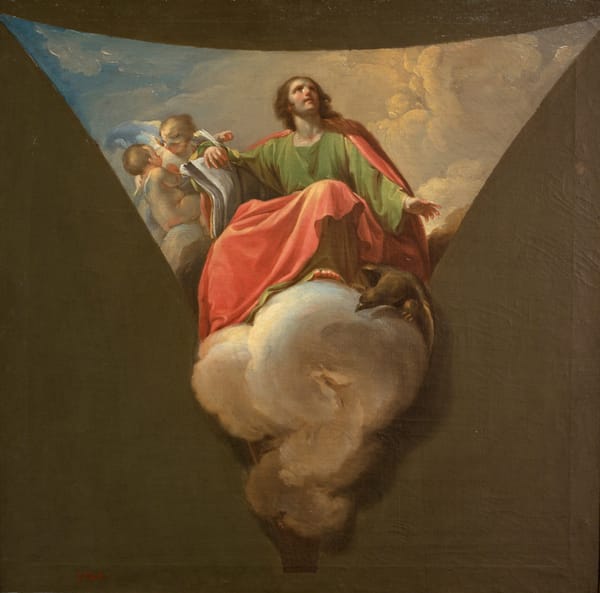About the Image:
Benvenuto Tisi, often referred to by his nickname "Garofalo," was an Italian Renaissance painter from the city of Ferrara. He was active during a transformative period in European art, and his works often blend the elegance and coloring typical of the Ferrarese school of painting with the monumental style of the Roman Renaissance.
Let's explore the details and the significance of this artwork, "Saint James the Greater":
- Subject: Saint James the Greater is one of the twelve apostles and is often recognized by certain attributes. Here, we see him holding a staff, which alludes to his role as a pilgrim. The scallop shell, another emblem often associated with Saint James, particularly in relation to the pilgrimage to Santiago de Compostela in Spain, seems to be missing from this depiction.
- Iconography: The book that Saint James holds is symbolic of the Word of God, indicating his role in spreading the teachings of Christ. His raised hand can be seen as a gesture of blessing or possibly teaching.
- Setting: The architectural setting, with its classical columns and arch, lends the painting a sense of grandeur. The view through the archway offers a serene landscape, juxtaposing the indoors and outdoors, possibly symbolizing the journey of spiritual discovery.
- Background Figure: The nun in the background could represent a donor or a specific religious figure, but without additional context, her identity remains a subject of interpretation. Such figures were not uncommon in religious art, representing patrons, saints, or other relevant individuals.
- Color and Technique: Garofalo's use of vibrant colors is evident in the rich reds and greens of Saint James's robes. The play of light and shadow gives depth to the figure, and the details, from the facial expression to the texture of the fabric, showcase Garofalo's mastery.
- Date and Context: Painted in 1550, this artwork is from Garofalo's later period. By this time, he would have been exposed to the works of many great Renaissance artists, including Raphael, whose influence can be perceived in the composition and the serene expressions of Garofalo's figures.
In sum, "Saint James the Greater" by Benvenuto Tisi is a remarkable representation of religious devotion and the artistic finesse of the Renaissance period. Garofalo's meticulous attention to detail, combined with his understanding of religious iconography, makes this painting not just a visual treat but also a window into the spiritual and artistic inclinations of his time.
